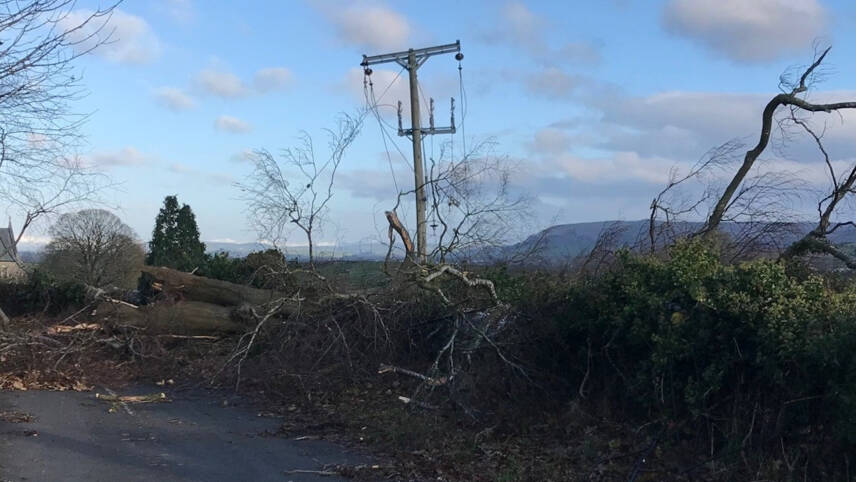This is the Sponsored paywall logged out

Trialling new technologies and innovations is high on the agenda for distribution network operators (DNOs) as they take stock following a winter of unprecedented storms, according to Dan Clarke, Energy Networks Association’s head of innovation.
Last November, Storm Arwen brought severe winds across the UK, impacting critical infrastructure including the electricity network and leaving thousands of customers off supply.
Just three months later, parts of the country were again tackling the impact of extreme weather in the face of a trio of storms – Eunice, Dudley and Franklin.
While Ofgem’s review into the networks’ response to Arwen is ongoing, the sector is already exploring how lessons learned can help to boost the response to future extreme weather.
According to Clarke, demonstration projects can play a critical role in improving network resilience by allowing DNOs to robustly trial and test the validity of new technologies and solutions in a safe environment.
“We’ve all been reminded of how important a resilient network is in the last few months. When you consider innovative projects, and changing and adapting things on the network, we want to make sure it works and that it works in all scenarios,” he said.
“Demonstration projects are absolutely essential and they also allow us to bring in new technologies and new ideas from different and adjacent sectors. It allows lots of people from the network – whether it’s a gas network or electricity network, transmission or distribution – to be brought together into a safe place to innovate and come up with new ideas on the network. It’s absolutely essential.”
ENA convenes a group of innovation managers from the DNOs on a weekly basis to discuss current innovation projects happening within each of the networks and any new ideas on the horizon. Networks have the opportunity to get involved with new innovation projects, which provides a platform for collaboration as well as spreading the associated risks and costs, explained Clarke.
A major consideration for DNOs is how innovative solutions can not only help to tackle connectivity issues during and after storms, but how they can also help to better protect field operatives.
“Having engineers out in all weathers tackling those kinds of conditions while the storms are ongoing is incredibly difficult. So the more accurate we can be with locating where those faults are, the better,” said Clarke.
“Increasingly, we’re seeing that the faults can be located remotely. A person operating the system back in the office can identify where those faults are occurring and actually take action there. So you don’t need somebody out there with a scanner, a monitor, or a torch checking where the faults are because often it’s being done back in the office.”
For more on how innovation is shaping DNOs’ response to extreme weather, read Utility Week’s recent report The eye of the storm for further insight.




Please login or Register to leave a comment.